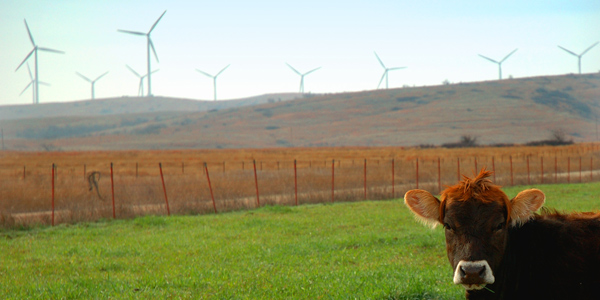By Rich Heidorn Jr.
FERC on Thursday ordered new rules to increase the transparency and timeliness of the generator interconnection process (RM17-8, Order 845).
The order adopts all but four of 14 potential rule changes in the commission’s December 2016 Notice of Proposed Rulemaking revising the pro forma large generator interconnection procedures and large generator interconnection agreement (LGIA). (See FERC Proposes Changes to Interconnection Rules.)
The rulemaking, which was prompted by a complaint by the American Wind Energy Association, applies to generators larger than 20 MW.
Commission staff said the revisions acknowledge the inefficiencies that have resulted from changes to the generation industry since the commission issued the pro forma interconnection procedures and agreement in 2003 (Order 2003).
“These inefficiencies include backlogs in interconnection queues, long timelines to process interconnection requests and late-stage withdrawals of interconnection requests that can lead to cascading interconnection restudies, which can lead to even more withdrawals,” staff said in a presentation at the commission’s open meeting.
It also seeks to address transmission providers’ concerns that the interconnection study process has become difficult to manage because they have been flooded with requests for new facilities that have little chance of reaching commercial operation.
The final rule removes a limitation on an interconnection customer’s ability to construct interconnection facilities and standalone network upgrades and requires transmission providers to improve their dispute resolution procedures.
To improve transparency and efficiency, the rule:
- requires transmission providers to make public their methods for determining contingent facilities and to list the processes and assumptions used for network models employed in interconnection studies;
- revises the definition of “generating facility” to explicitly include electric storage;
- sets requirements for reporting on aggregate interconnection study performance;
- allows an interconnection customer to request a level of service lower than its generating facility capacity;
- requires transmission providers to allow provisional interconnection agreements that offer limited operation of a generator before completing the interconnection process;
- requires transmission providers to offer the use of surplus interconnection service; and
- requires transmission providers to consider changes in an interconnection customer’s proposed technology that occur during the interconnection process to determine if they constitute a material modification.
“The transparency reforms make information more timely and accessible to transmission customers, thereby potentially reducing the number of interconnection requests for projects that are unlikely to reach commercial operation,” staff said. “The efficiency and enhancement reforms facilitate the use of existing interconnection, mitigate the likelihood of unnecessary upgrades and related costs, provide paths to bring generation online more quickly, and allow for the incorporation of technological advancements into an interconnection request.”
Stakeholder comments persuaded FERC not to adopt four other rule changes requiring periodic restudies, self-funding of network upgrades, the posting of congestion and curtailment information and the modeling of electric storage.
The commission also took no action on two other issues on which the NOPR sought comment but for which no proposals were made: cost caps for network upgrades and affected-system coordination, the latter of which was the subject of a two-day technical conference in early April. (See Renewable Gens Face Off with RTOs at Seams Tech Conference.)
The American Council on Renewable Energy (ACORE) issued a statement praising the order. “While the reforms cover interconnection for all types of energy generators, we believe the final rule is an important recognition of a fundamental shift in the U.S. electric sector as we continue to diversify our electricity supply. Going forward, we are optimistic the rule will improve and expedite critical interconnection procedures for solar, wind and other renewable technologies, while also expanding access to energy storage resources.”
The rule will be effective 75 days after publication in the Federal Register.





